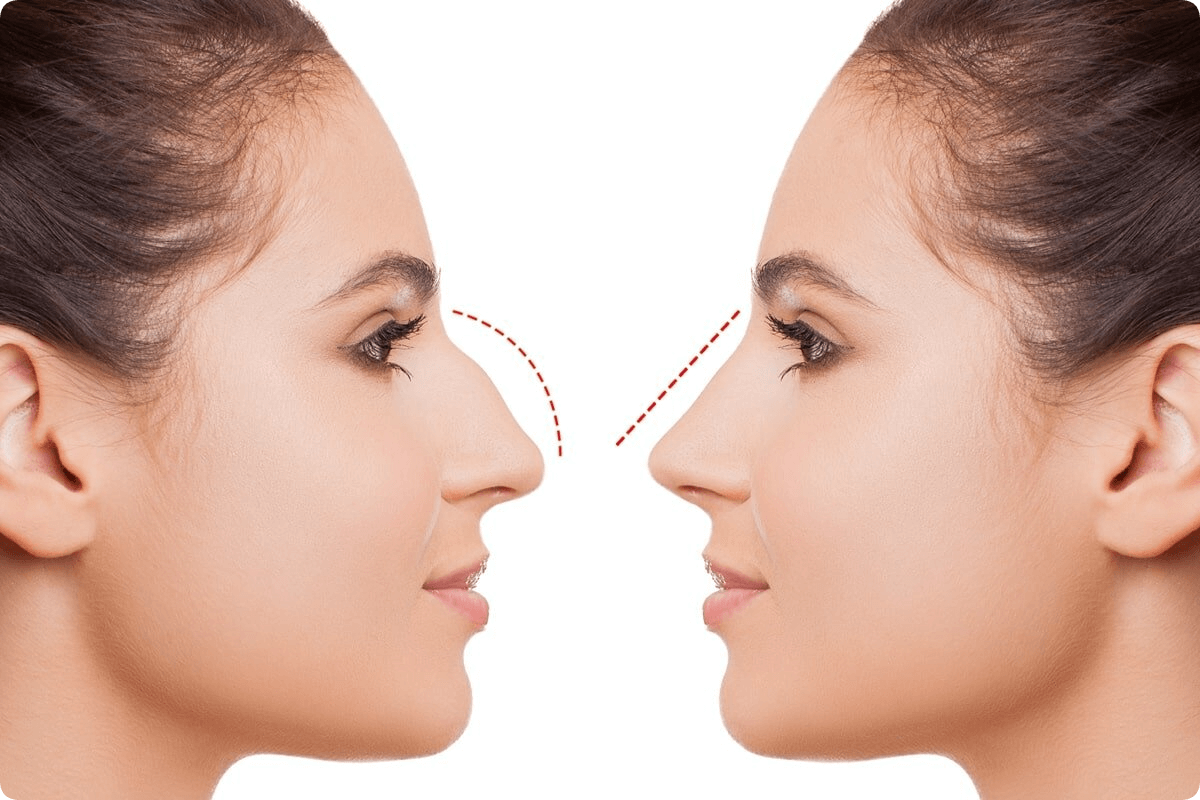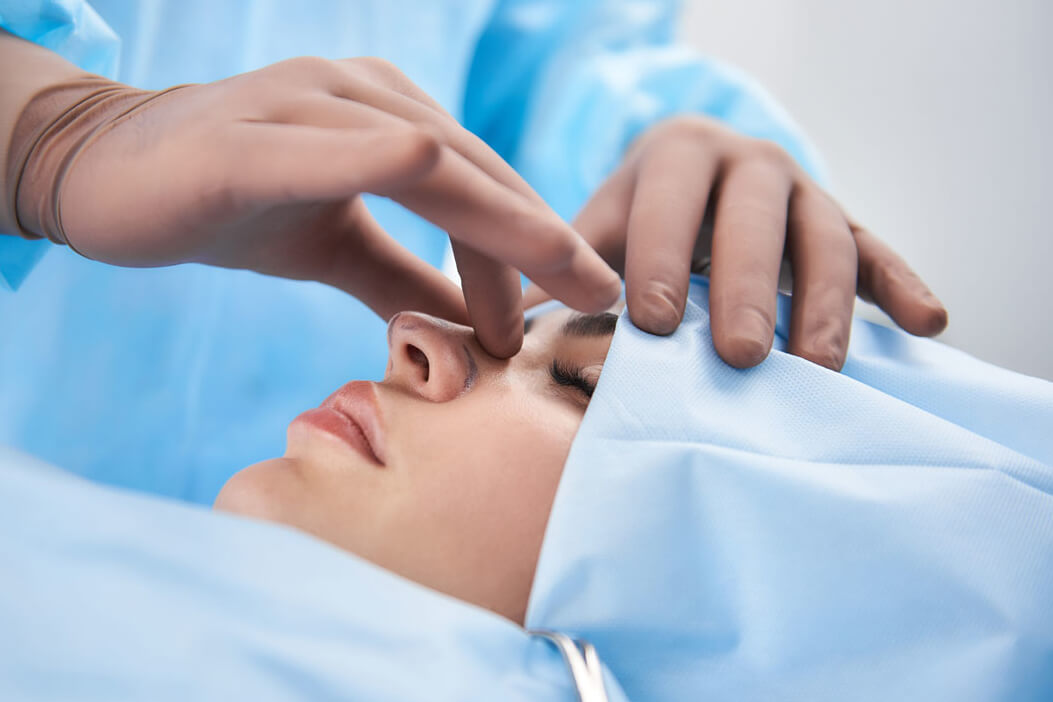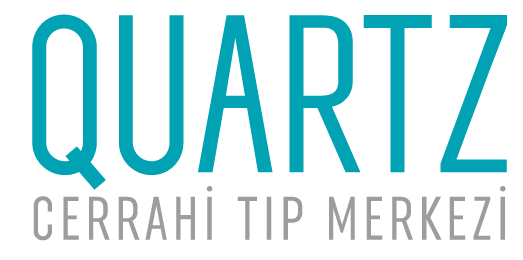Rhinoplasty, commonly referred to as a nose job, is an aesthetic procedure aimed at achieving a balanced and harmonious appearance of the nose in relation to facial features, creating a proportional and ideal nasal structure while also facilitating easier breathing. Positioned at the center of the face, the nose is one of the most crucial elements that define our expressions, and its shape significantly influences overall facial aesthetics. Tailored to the individual’s needs, rhinoplasty enhances not only the aesthetic appearance but also reduces respiratory issues, allowing for more comfortable breathing. Whether performed through surgical or non-surgical techniques, rhinoplasty contributes to the individual’s ability to express themselves more confidently and aesthetically.
What is Rhinoplasty?

Rhinoplasty, also known as nose aesthetics, involves procedures that help the nose achieve its ideal shape. The ideal nose shape varies from person to person. Features such as facial structure, face shape, the bone structure of the nose, and facial expressions are examined to determine the individual’s ideal nose shape.
Nasal deformities can be congenital or acquired. If a person is dissatisfied with the appearance of their nose or experiences difficulty breathing, a doctor’s examination will identify the source of the issue. Based on the identified problem, a solution method is planned to help the individual attain an ideal, aesthetic nasal structure.
Who is Rhinoplasty for?
Rhinoplasty is performed on individuals who are dissatisfied with the appearance of their nose or experience breathing difficulties. Deformities that may require rhinoplasty include:
- The nose appearing disproportionate to the face due to genetic factors.
- The nose being wide or long in relation to facial proportions.
- Deviated nasal septum.
- Distorted nose shape due to accidents or illnesses (such as fractures, bruising, or misalignment).
- Asymmetrical nose.
- Low nasal tip.
- Nasal tip being too high or bulbous.
- Asymmetry of the nostrils.
- To undergo rhinoplasty, individuals must be at least 18 years old, not pregnant or breastfeeding, and have no health issues that would prevent surgery.
What Methods are Used in Rhinoplasty?
The method used in rhinoplasty is determined based on the individual’s needs. Factors such as the type and degree of nasal deformity and whether the individual experiences breathing difficulties are considered to determine the most suitable approach. There are two commonly applied techniques in rhinoplasty:
In addition to the two most common methods, there are different rhinoplasty techniques used in special cases:
- Nasal Tip Surgery (Tipplasty): This surgical method is used for various deformities such as a drooping nasal tip, enlarged nasal tip, and asymmetry of the nostrils. Depending on the type of deformity, either open or closed rhinoplasty techniques are selected.
- Secondary Rhinoplasty: This is a corrective procedure performed to address shape irregularities that occur after a primary rhinoplasty. This revision surgery can be carried out using either open or closed techniques.
- Nasal Filler: A non-surgical nose shaping method involving the injection of a hyaluronic acid-based dermal filler into the nose. This technique temporarily addresses issues such as a drooping nasal tip.
- Fat Injection for the Nose: This method involves transferring excess fat harvested from the individual via liposuction to specific areas of the nose using a syringe. It is effective for correcting a drooping nasal tip and is a temporary procedure.
- Septoplasty: This procedure corrects a deviated septum, which is a curvature issue in the cartilage and bone wall of the nasal region. This condition can hinder breathing and lead to problems such as snoring and dry mouth. Septoplasty corrects the nasal deformity, improves aesthetic appearance, and resolves respiratory issues.
How is Rhinoplasty Performed?
Rhinoplasty procedures are carried out using the surgical method selected based on the individual’s nasal deformity and needs. Filler and fat injection techniques are performed using anesthetic cream. Filler injections typically take 10–20 minutes to complete.
In addition to dermal filler and fat injection methods, general anesthesia is used for other rhinoplasty surgeries. The average duration of the surgery is between 1 and 5 hours. Unless there are exceptional circumstances, patients are typically discharged on the same day as the surgery.
Post-Rhinoplasty Care
To maintain the shape of the nose and protect it from impacts, a thermal splint (a type of cast) is used for 7 days after rhinoplasty. It is normal to experience bruising and swelling in the nasal area. With the doctor’s approval, cold compresses and nasal sprays may be applied for relief.
Key post-operative care tips include:
- Avoid wearing glasses for one month to prevent any alteration of the nose shape.
- Refrain from engaging in strenuous activities or sports.
- Avoid smoking and environments where smoking occurs.
- When sleeping, the head should be supported with a pillow to keep it elevated above the shoulders.
- Protect the nose from impacts and avoid strenuous movements. Activities such as forceful nose cleaning with water should be avoided.
- The recovery process typically takes 5–7 days. After this period of rest, individuals can return to work.
Rhinoplasty Prices

Rhinoplasty prices vary based on several factors, including the degree of nasal deformity, the method used, the technology and materials employed, and the experience of the doctor. If you have concerns about the appearance of your nose or respiratory issues, you can visit our center for an examination to learn about the most suitable rhinoplasty methods and their associated costs.
Is Rhinoplasty Permanent?
Surgical methods that reshape the nasal cartilage and bone provide permanent results in rhinoplasty. In contrast, non-surgical techniques such as dermal fillers and fat injections have temporary effects. Dermal fillers for the nose typically last for about 6 months, while fat injections can last between 1 to 1.5 years.
When Will the Shape of the Nose Settle After Rhinoplasty?
If rhinoplasty is performed using filler techniques (such as dermal fillers or fat injections), the full effect typically establishes within 2–3 weeks. In contrast, surgical procedures take approximately 1 year for the nose to achieve its final shape. The time it takes for the rhinoplasty effects to materialize also depends on factors such as skin thickness, whether the surgery was open or closed, and the skin’s capacity to retain moisture. Individuals with thicker skin and a higher moisture retention capacity may see effects take 1–2 years to fully develop, while those with thinner skin and less swelling often observe results in a shorter time frame.
Will There Be Pain After Rhinoplasty?
A certain degree of pain may be experienced after surgical rhinoplasty. Relief can be provided with the approval of the doctor through pain relievers, cold compresses, and nasal sprays.
What Are the Advantages of Rhinoplasty?
The benefits and advantages provided by rhinoplasty include:
- Correction of nasal deformities to achieve an ideal, proportional, and aesthetic nasal structure.
- Improvement of the overall facial appearance.
- Alleviation of respiratory issues, ending problems like snoring and dry mouth, which enhances sleep quality.
- Increased self-confidence.
- Advantages in visual professions.
- Improvement in the sense of smell.
- Incisions are made in a way that they are not visible, resulting in no noticeable surgical scars.
Can Nasal Turbinates Be Addressed at the Same Time as Rhinoplasty?
Nasal turbinate formation occurs due to polyp formation in the nasal conchae or thickening of the membrane surrounding the conchae. Individuals with nasal turbinates often experience nasal congestion, making it difficult to breathe. In advanced stages, nasal turbinates can lead to various issues such as sinusitis and deviation. Treatment for nasal turbinate issues can be performed using methods such as radiofrequency, electrocautery, or turbinate surgery. If a person has both nasal turbinate problems and nasal deformities, turbinate surgery can be performed simultaneously with rhinoplasty.
What Are the Risks of Rhinoplasty?
Rhinoplasty carries various risks, including infection, bleeding, shape irregularities, and damage to cartilage and bone tissue. When performed by skilled and experienced doctors, these risks can be minimized, ensuring that procedures are carried out safely.
What If I Don’t Like the New Result After Rhinoplasty?
Individuals who wish to undergo rhinoplasty but are hesitant about surgery can first opt for nasal fillers to experience their new nose temporarily. Once the effects of the filler diminish, they can either pursue permanent rhinoplasty or receive temporary fillers again.
Before undergoing rhinoplasty, every candidate is informed about what their nose will look like post-surgery through a 3D simulation method. Therefore, individuals have a clear idea of their post-operative appearance in advance. However, if patients are still unsatisfied with their results after healing, they can undergo a revision surgery to achieve their ideal nasal structure.


